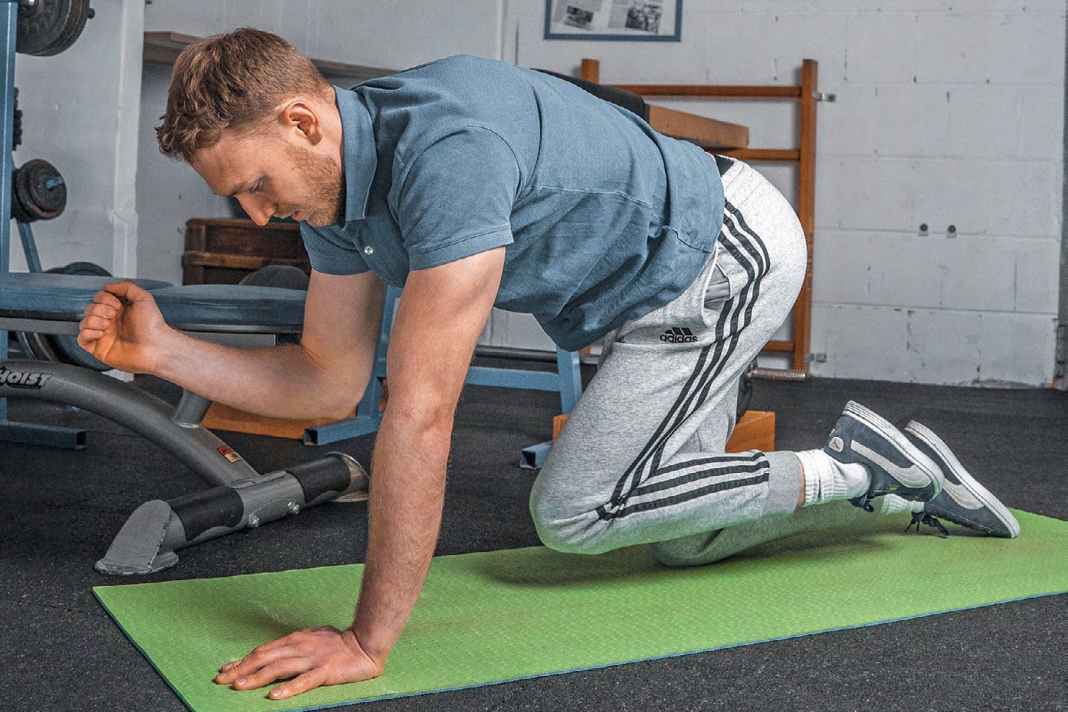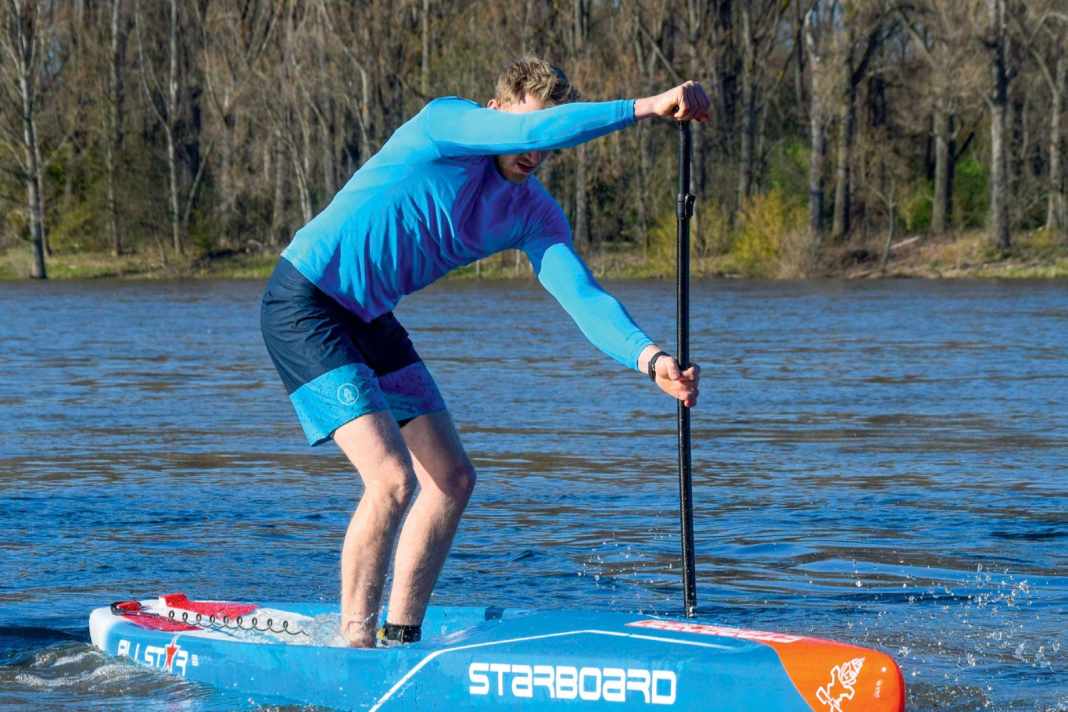





Ole Schwarz recommends these exercises:
The following exercises are designed to maintain fitness, but should also be used as a supplement to improve performance on the board. The exercises also serve to prevent injuries. The exercises are taken from the training plan of a competitive athlete, but are just as suitable for amateur paddlers in terms of functionality. In competitive sport, it is becoming increasingly clear that athletes are specialising in one discipline.
To ensure that the training is as effective as possible, the sets and repetitions should be chosen accordingly. A set consists of several repetitions of an exercise, with a short break between sets. All the exercises shown can be differentiated with little effort and adapted to your own performance and training level. The load is much shorter in a sprint than in a distance race. You should therefore train with different goals.
- For improved muscle endurance, we recommend training 1 to 3 sets of 15 to 20 repetitions each with lower weights.
- For muscle building/hypertrophy (volume increase), 4 to 6 sets of 8 to 15 repetitions each (medium weights) are recommended.
- For maximum strength, 3 to 5 sets and 3 to 5 repetitions are suitable (high weights). All exercises shown are to be seen as recommendations for athletes with training experience - especially in strength training. Beginners to strength training should first learn the basic aspects under supervision, especially for handling weights.
Warm up
Before training and also before paddling, just a few exercises (half a minute each) ensure proper preparation.
Hand circles: the simplest exercise to prevent pain and injuries in the wrists. Particularly helpful before exercises that place a lot of weight on the wrists.
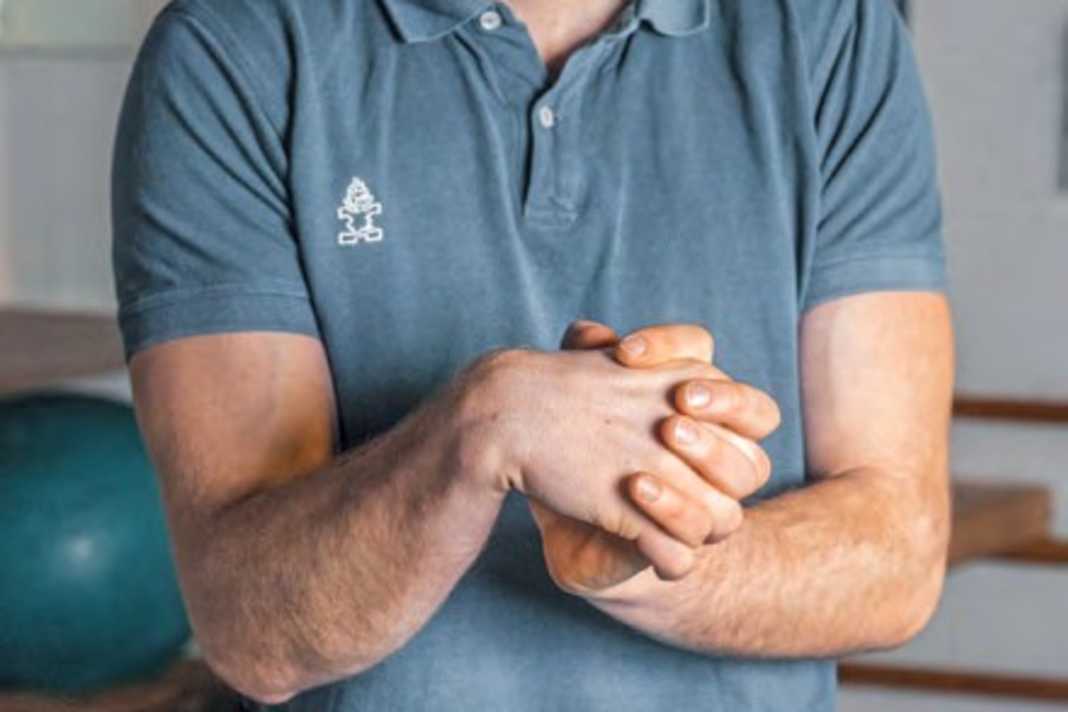



Our intervertebral discs function like a kind of shock absorber; they consist of around 80 per cent water. Touching the toes during toe touch puts pressure on the intervertebral discs and they lose fluid. When you straighten up, the pressure is relieved again and fluid flows into the intervertebral discs, supplying them with nutrients and promoting blood circulation in the back. Upper body twists and hand circles are also good preparatory exercises.
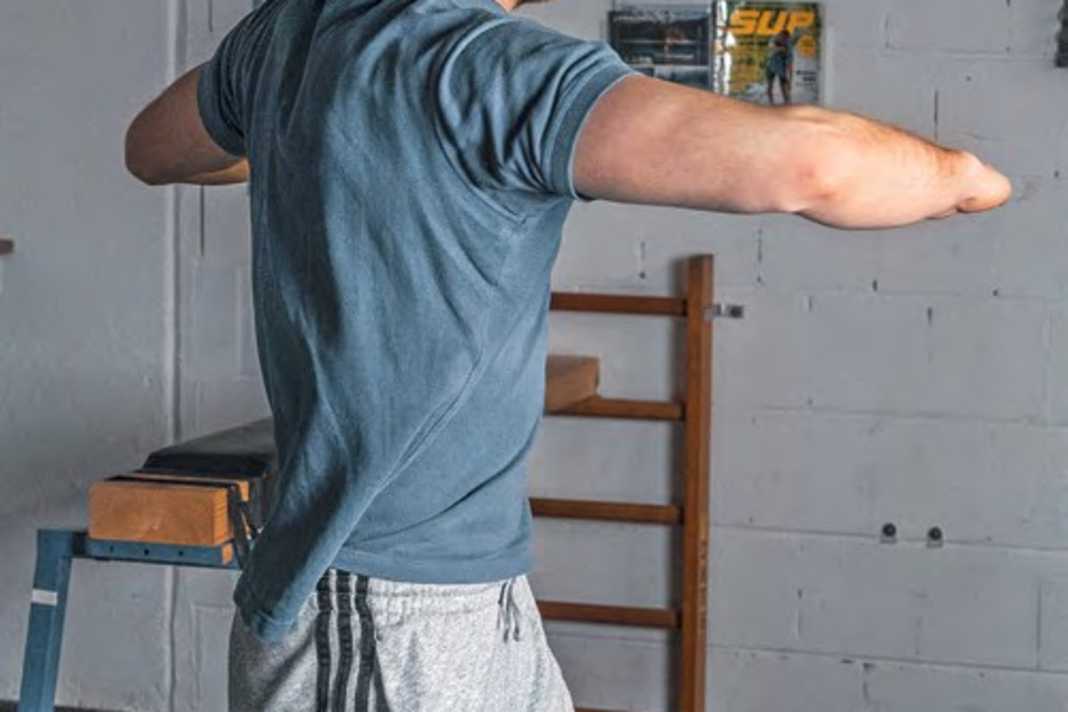





Dumbbell pull
One-arm dumbbell pulls are a strength exercise that targets the back muscles and in particular the latissimus dorsi.
To perform the exercise, support yourself with one leg and one arm on a bench - or two chairs - and hold a dumbbell in the other hand. Your free leg is firmly on the floor, your knee is slightly bent and your back is straight.
Pull the dumbbell up close to your body until your elbow is against your torso. The back remains straight and does not rotate. The pull therefore only comes from the arm and back muscles. Stand-up paddling puts a lot of strain on the latissimus dorsi, which is why this exercise is particularly suitable for building muscle. In addition, the leg standing on the floor must be stabilised during the exercise, which practically trains your balance as a side effect.
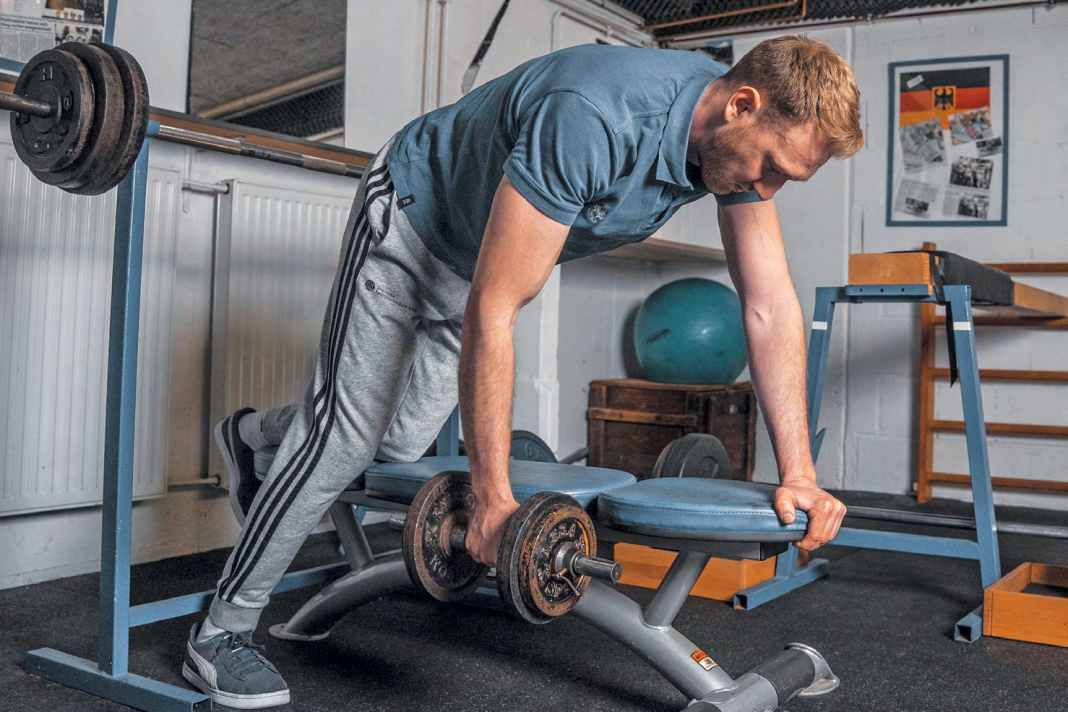


Barbell pull
Canoeists and rowers will be familiar with it. To build up strength in winter, it's all about pulling. This exercise is more for advanced and competitive athletes, but can only be found in a few gyms. However, most canoe clubs with a weight room will have a bench for pulling. In recent years, barbell pulls have also been used to train strength endurance, as they specifically target the muscles that are also used in competition. For example, up to 75 repetitions are performed with a low weight.
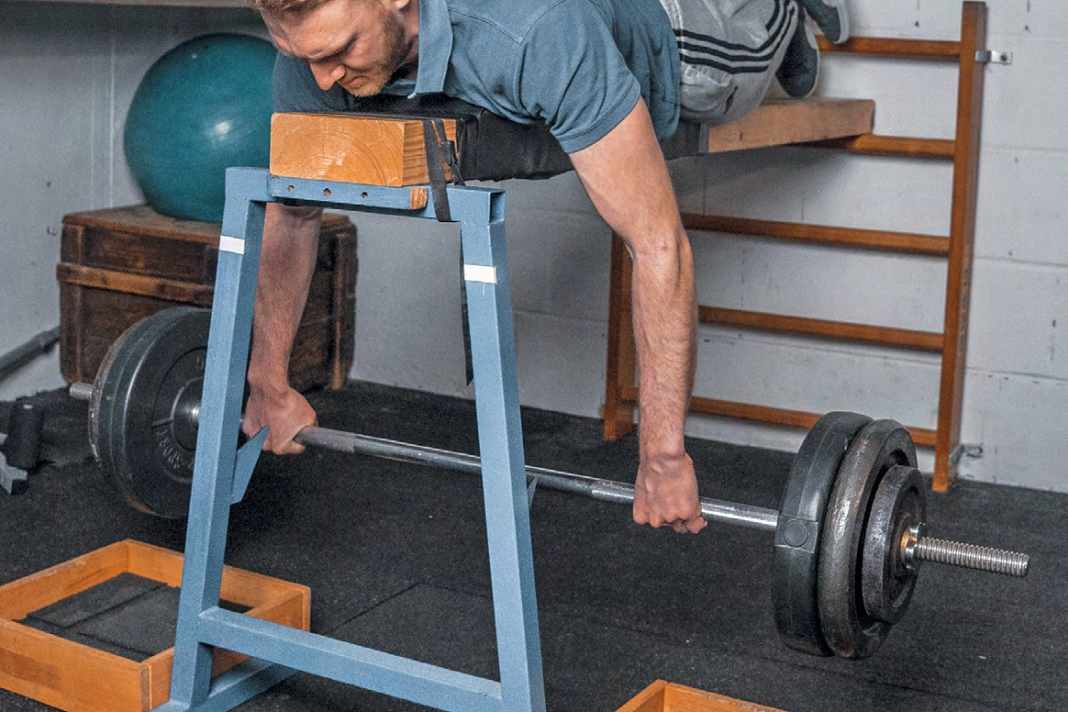



Fascia roller for back and legs
Fascia training should not be neglected. These two exercises should help to relieve tension. It is important that your hands are behind your head when rolling over your upper back. This brings the shoulder blades together and prevents you from rolling on your spine.
To keep the body in balance while paddling, the vastus lateralis muscle (outer thigh) is constantly working, and the iliotibial tract is also strained. This can lead to overloading. In runners, this is referred to as runner's knee. As the hinge joint of the knee does not allow this muscle to be stretched, lateral rolling on the fascia roll enables good mobilisation.
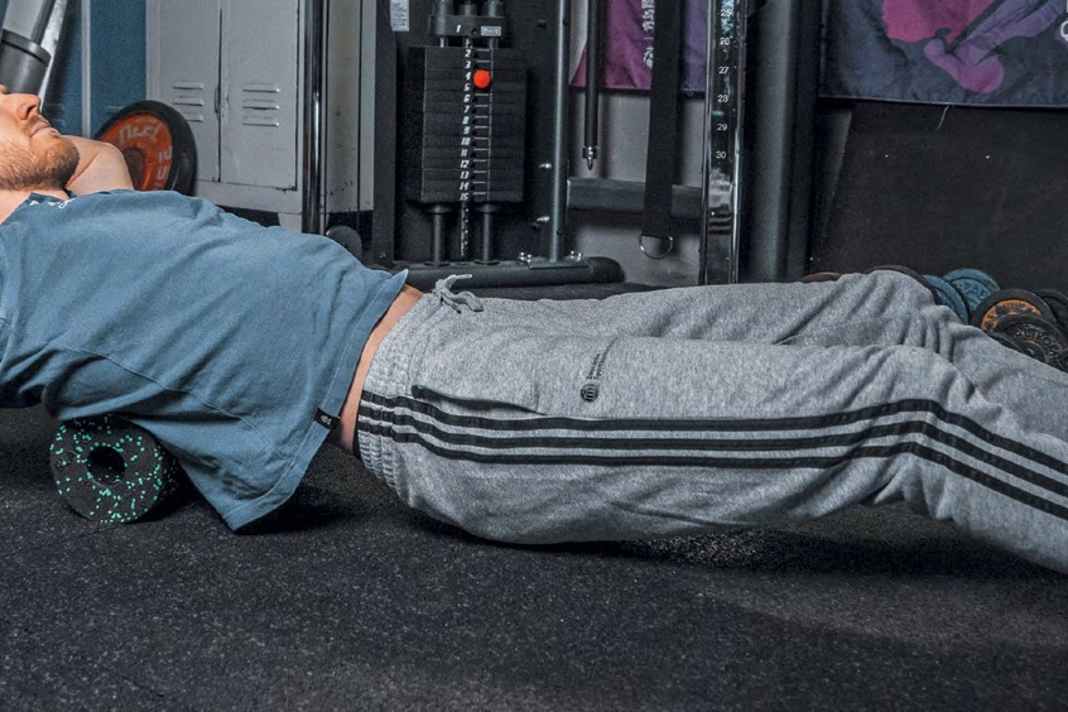





Belly roller
A Belly roller is a handy and effective training device for a good full-body workout. The level of difficulty can be adjusted very easily by rolling more or less forwards.
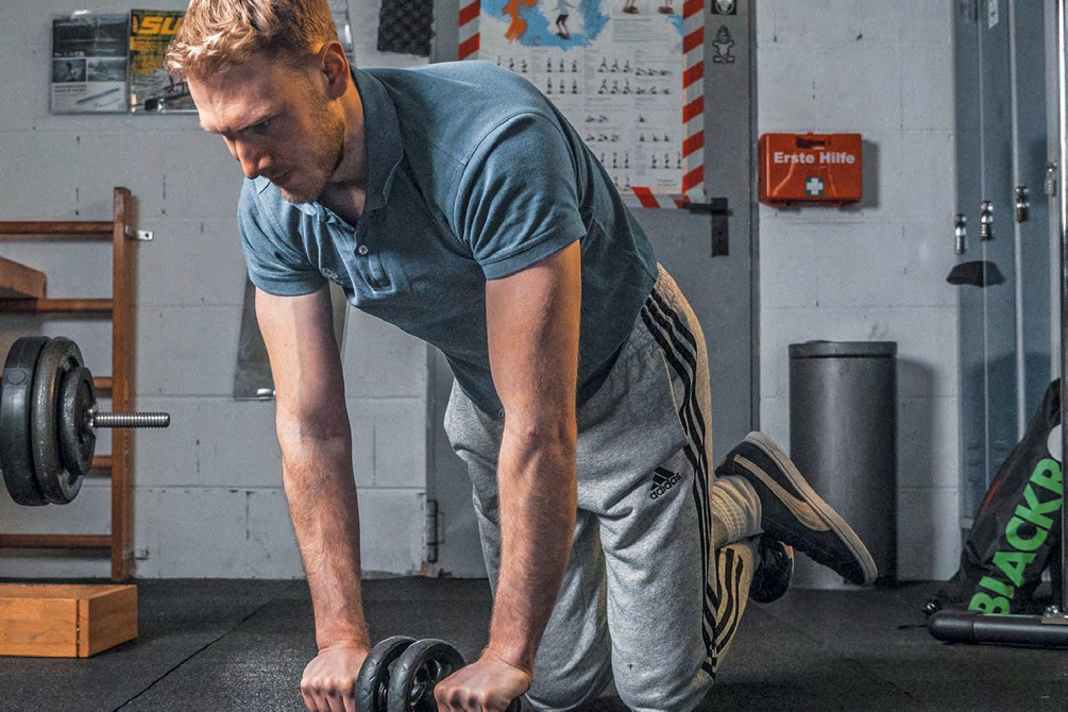



Dips
A super simple exercise that you can do anywhere. Whether with a chair, on the sofa or on a park bench. Dips are a good exercise for the triceps. The difficulty can also be adjusted here by bending the legs (feet closer to the upper body). The exercise is important for paddling on the board, as the hand on the knob puts additional pressure on the paddle (about 20 per cent), while the other hand pulls (about 80 per cent).
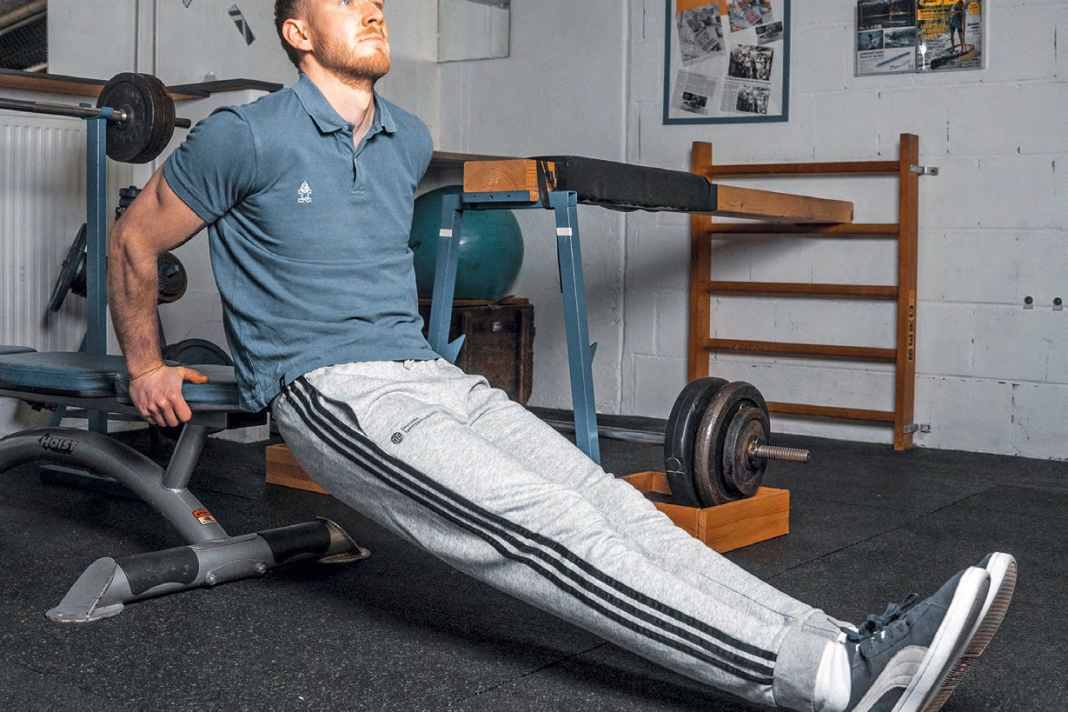



Lateral support with rotation
Clean execution is the priority here, the body should form a straight line. The supporting elbow is positioned exactly under the shoulder joint during the exercise and is angled at 90 degrees. Here too, it is advisable to perform the exercise in front of a mirror at the beginning.
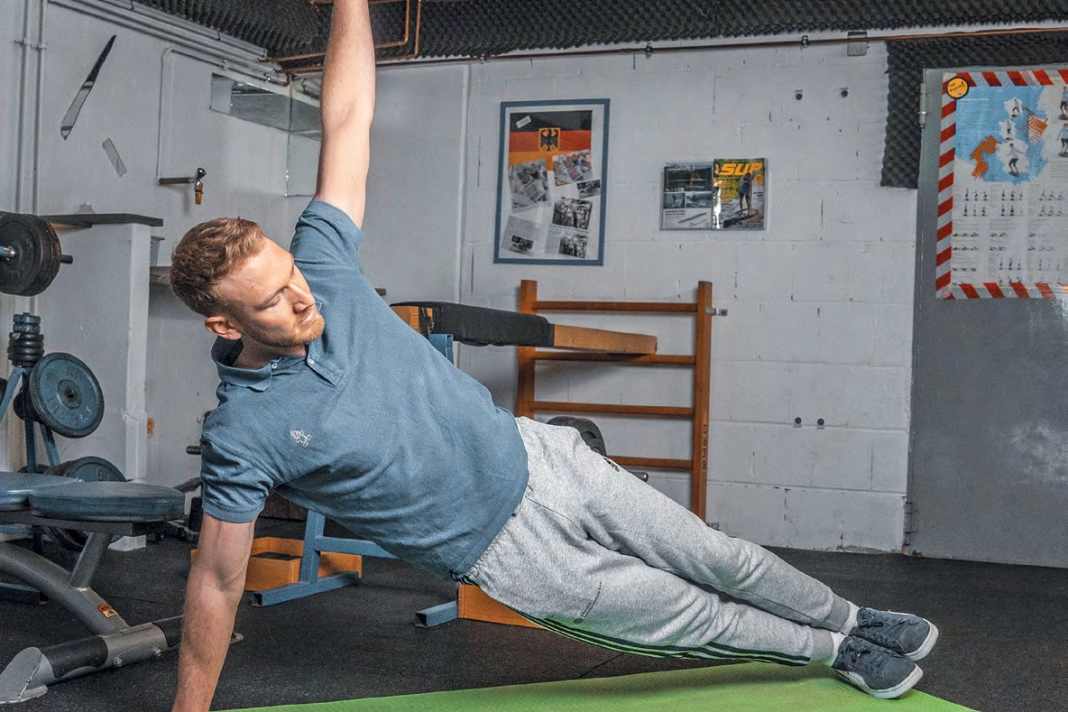


Bent over Butterfly
Bent over butterfly is a great movement that targets the posterior deltoid muscle and contributes to balanced shoulder development. This is beneficial for overall shoulder functionality, strength and the appearance of the upper back. The best part is that the exercise can be performed well with light weights. For example, one-litre water bottles work very well for the exercise. For good technique and a full range of motion, start slowly and with little weight, and it is also advisable to perform the exercise in front of a mirror so that you can correct yourself.
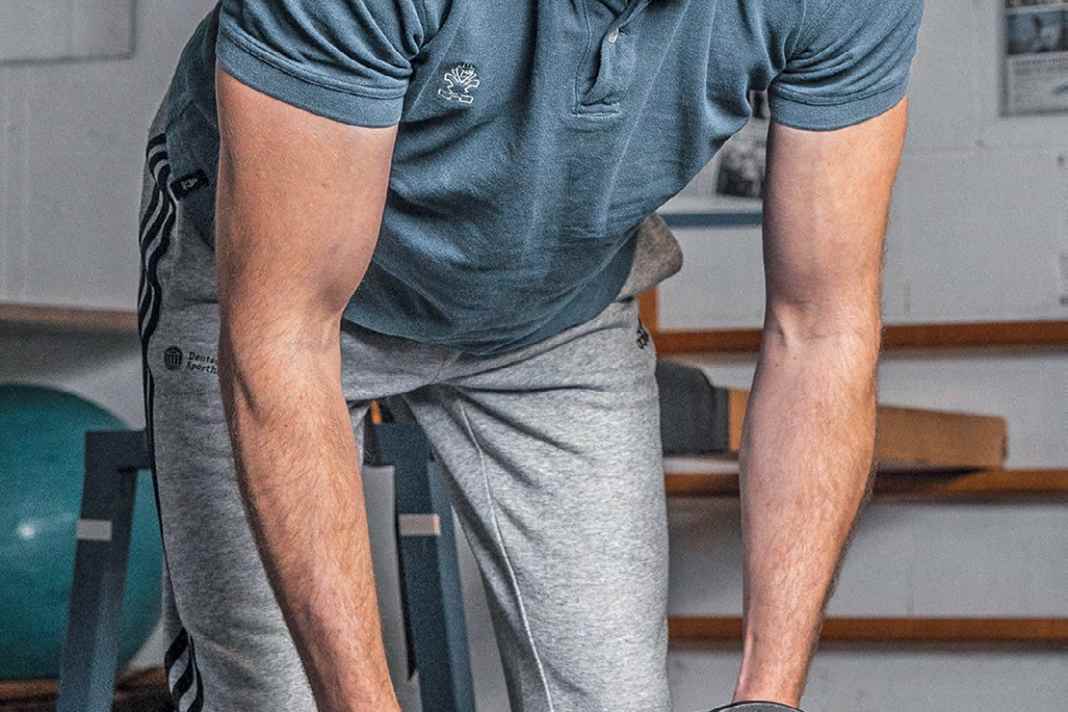



Russian Twist
The abdominal muscles are the counterpart to the back muscles. This is precisely why it is important to create a balance here. Depending on the paddling technique, this can lead to imbalances between the back and abdominal muscles. Russian Twist strengthens the torso, the oblique abdominal muscles and the spine. Compared to normal sit-ups, the exercise not only targets more muscle groups but also requires more balance, which can only prove beneficial on the board. You can perform the exercise with or without weights. With weights, it should be selected so that you can complete 20 to 25 repetitions. The feet are in the air and the hands - with or without weights - keep switching from one side to the other.
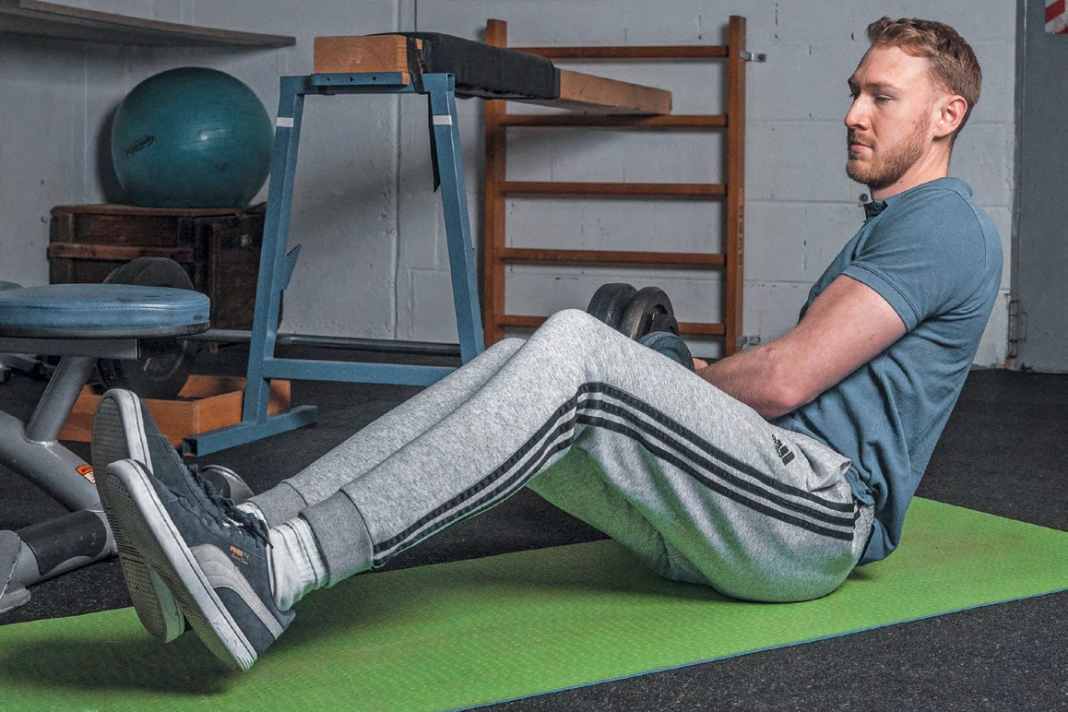



Ball circles
This exercise acts as mobilisation and strength training at the same time. Nobody wants to have shoulder problems. However, after long training sessions on the board, it can happen that the shoulder feels a little tense the next day. To keep the shoulder mobile, exercises with a large amplitude of movement are particularly suitable, such as circling with a ball. You don't necessarily have to use a ball as a tool. Make sure that you change the direction of movement regularly and don't just rotate in one direction.
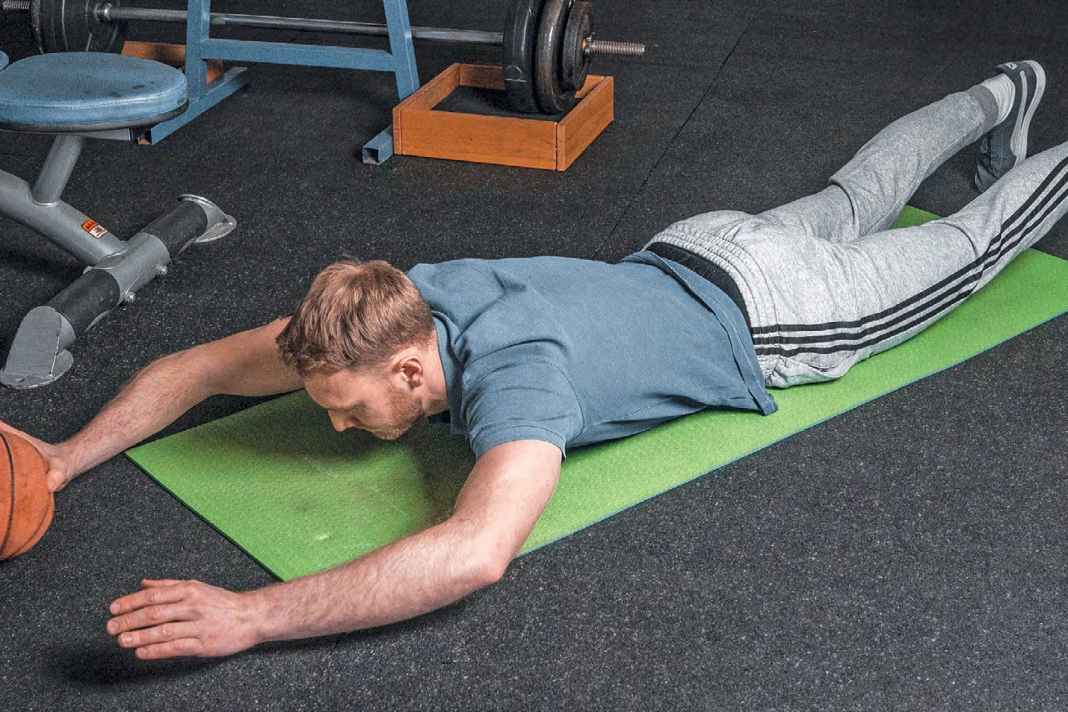




Hip Rise
Lifting the hips engages the hamstrings and gluteal muscles. The muscles in the lower back are also involved. Feet and hands are firmly planted on the floor. Bending forwards and backwards while paddling puts a lot of strain on the lower back. Many paddlers complain of pain or tension in their lower back after long training sessions on the board. This is often due to our everyday lives, where we spend most of our time sitting down and our backs are no longer used to the strain. This exercise can strengthen the lower back and stabilise the lumbar spine. Advanced users can also lift one leg.
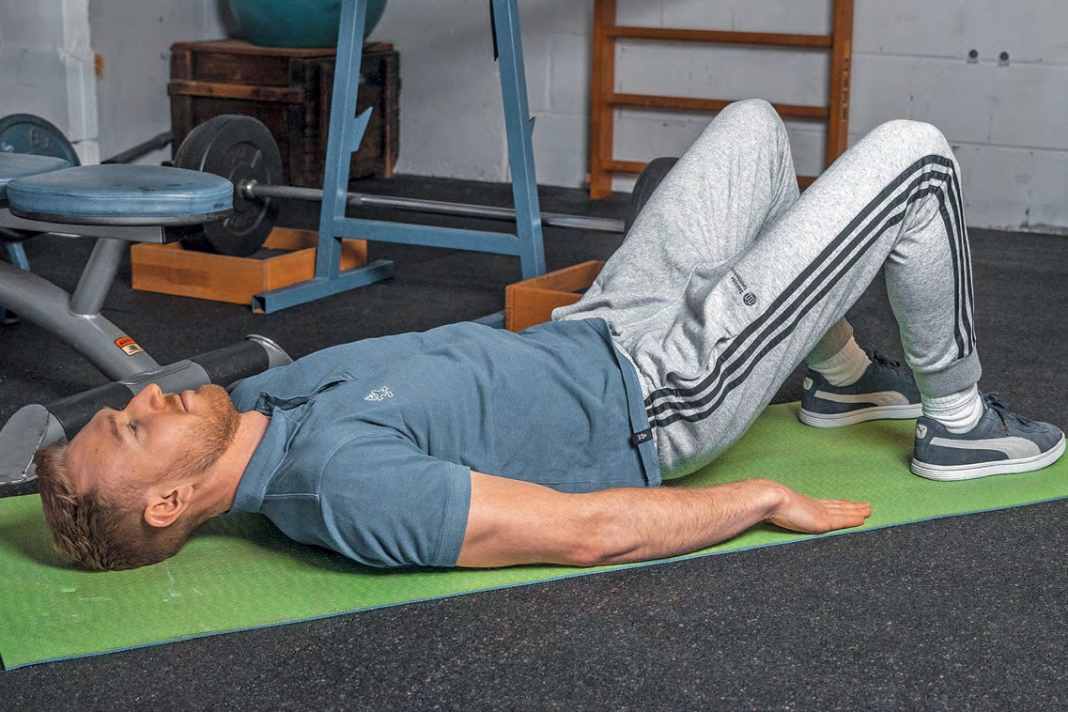



Autochthonous back muscles
The autochthonous back muscles (deep back muscles) are difficult to train specifically. One way of targeting these muscles is by losing your balance. This is because the muscles then have to work and stabilise the spine. In the plank position, you jump from one foot to the other (both feet are in the air for a short time). This briefly throws the body off balance. You can do this exercise even better as a partner exercise. One person is back in the plank position, the other person holds both feet just above the floor and drops one foot at random. The person in the plank position has to find their balance again.
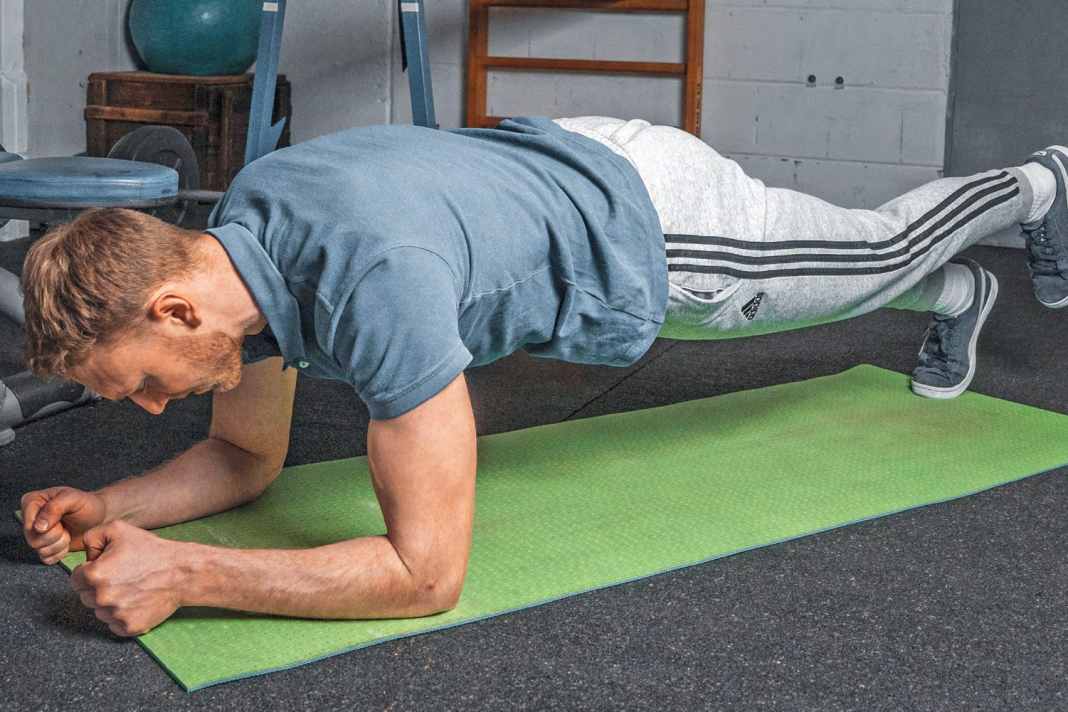


Elbow to knee
An exercise for stability and balance. It is important to maintain tension in the abdomen to avoid a hollow back. The exercise is also designed to strengthen the back muscles but also improve balance. You can vary the exercise by using soft surfaces on your hands and knees and light weights in your hands. Switch sides!
